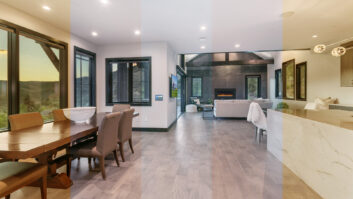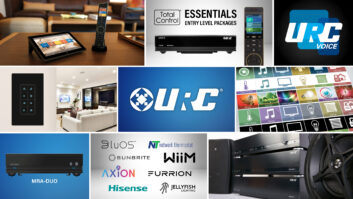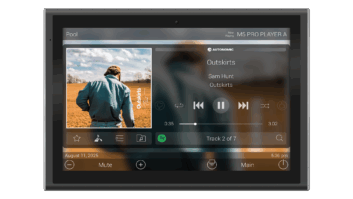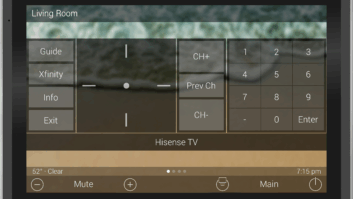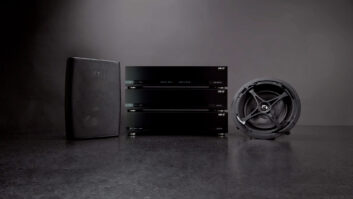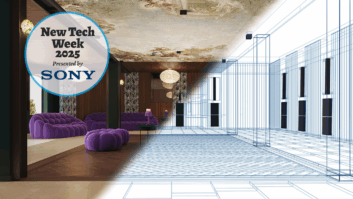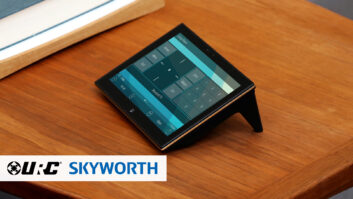
Without a doubt, one of the most important decisions a company will make is selecting the control system they will support. This decision establishes — and potentially differentiates — your company in the local market, and determines to some extent the kinds of projects you’ll install, the sub-systems it can interface with, and the complexity and customization of the programming.
This decision also comes with some costs.
Beyond the monetary cost of the hardware needed to outfit a showroom with a working system capable of demonstrating different features and options, there’s the cost you’ll be selling the hardware for, and the massive time commitment in the form of training and programming. Many companies now require some formal training before you are authorized to sell their product, followed by many more days/weeks/months of practical, on-the-job training as programmers learn the subtle nuances and tricks of a given programming software.
For these reasons, choosing a control system partner is almost like getting married; you go in planning for the long haul, and if you decide to get out, it can be painful and expensive.
While some large companies have the luxury of supporting multiple control brands, most of us will only be able to support one, and going in on that means going all in. When we started our company in 1995, we “dabbled” in Crestron for a few years, then shifted to ELAN, then moved to Control4 around 2010 (which we’re still supporting). Along the way, we offered other single-room, remote-only solutions for customers not needing whole-house integration, and one of the brands we’ve supported for many years is Universal Remote Control, aka URC.
URC’s Complete Control line of remote controls and base stations has served us very well over the years, delivering incredibly reliable performance and RF control, straight-forward programming, and with almost zero hardware-related callbacks. I’ve personally programmed dozens of MX-780, -890, -980 remotes and the like, loving the flexibility of being able to place any programming on any button, with power tracking variables, push/hold programming, and more.
More Reviews: Sense Labs Home Energy Monitor
Back in 2010, URC branched out beyond the one-room Complete Control system and into a whole-house solution called Total Control. This required an entirely new programming platform called Accelerator, new and more powerful MRX-series system controllers, new wand and touchscreen remotes, and a network-based infrastructure that brought it into the IP-age.
After a visit from my local URC rep, we started chatting about Total Control and how it might fit into our business model. We happened to be looking at redoing a multi-display system in a country club; something URC’s flexible programming architecture handles especially well, and he suggested I bring a Total Control system in for review. So, here we go.
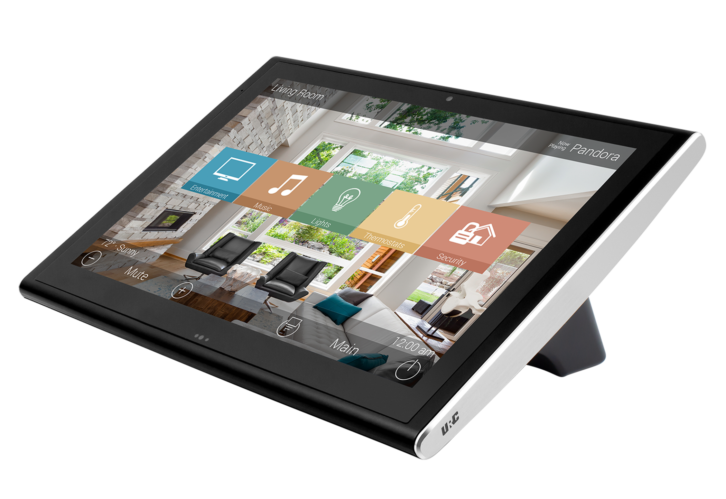
Training
Feel free to mentally insert the Lord of the Rings Boromir, “One does not simply…” meme here about ordering any gear from URC’s Total Control line. Even though there is an “Express Lite” limited version of the software and some hardware available through URC’s distribution partners for more basic installations, this still requires certification before being able to order it and access/unlock the software. As a reviewer, I got a bit of a free pass on URC’s training requirements. Also, with years of URC’s CCP programming under my belt, I was pretty confident I could figure out Total Control’s Accelerator and muddle my way through.
I’ll save you the time looking up the definition of the word “hubris”; it means “excessive pride or self-confidence.”
After a few months of living with the system and working with Accelerator, I’m not too proud to say I needed the training. And, to truly get the most out of Accelerator — and therefore your Total Control projects and installations — I daresay you need the training, too. I was lucky enough to have access to URC’s senior sales engineer, Shawn Stermer (who covers my area), and national sales manager, Lee Rambler, who kickstarted my project and were available when I hit a roadblock. And after watching Shawn and Lee make changes, as well as spending several hours poking around and making tweaks and changes on my own, I have a pretty good understanding of how Accelerator programming works, but I’ve no doubt I’m just scratching the surface of what my Total Control system is truly capable of, and would not yet feel confident jumping into a new system in a client’s home.
Fortunately, on top of free online training, programming guides, and integration modules for many of their control drivers, URC offers live virtual training to ensure dealers can get the most out of systems, with the full Total Control training taking two eight-hour days. (URC is slated to resume live training in July.)
For programmers that like living fully outside the sandbox and getting into full and total customization, URC also offers a version of its software called Flex. With Flex you literally create every background, button, and graphic in a project, as well as manually create every bit of programming. URC described Flex as being similar to programming URC MX-3000 touchpanels from back in the day.
To help alleviate the cost of bringing in a demo system, URC has a provision where a dealer can “earn” their demo kit by selling two systems during a specified period. You can’t really ask for a better “try it, you’ll like it!” offer.
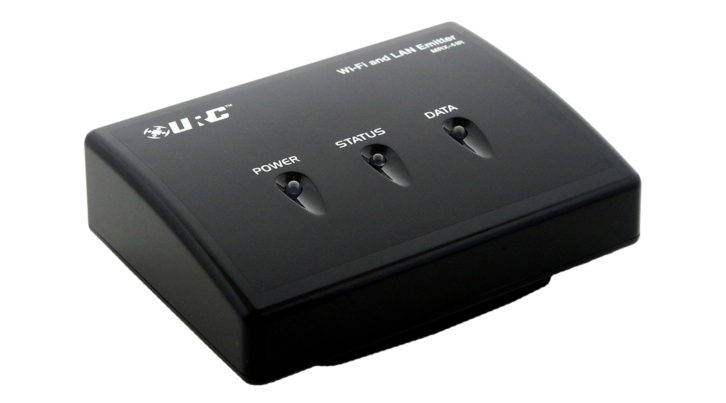
Installation
To get a good idea of a representative whole-house control and audio system, URC sent me a variety of hardware including the MRX-15 advanced processor, TRC-1480 handheld remote with voice control, TDC-9100 10-inch tabletop touchscreen controller, HDA-8100 multi-zone amplifier, and MRX-4IR auxiliary base stations.
While URC offer its own Z-Wave lighting hardware, the system also integrates with a variety of other popular subsystems like Lutron and Vantage, which worked perfectly since my house is kitted out with Radio RA2 lighting and thermostats. Ditto for shading control, where the company integrates Somfy, QMotion, Lutron, Automate (Rollease Arcmeda), and Hunter Douglas. There is also security system integration support for HAI, Honeywell, DSC, and HouseLogix, along with multiple IP cameras and NVRs.
If you’ve ever poked around URC’s database, you’ll know it is packed with thousands of IR drivers supporting a huge array of equipment going back many years. Total Control ups this ante by adding a significant RS232 and IP database to Accelerator, along with additional drivers you can download from the company’s portal. In short, it’s likely that URC will interface with your preferred subsystems. For my system — Marantz pre-pro, Sony and LG TVs, Dish Hopper, Apple TV, Samsung 4K Blu-ray, HEOS Link, Lutron lighting and HVAC, and Hunter Douglas shades — all of the drivers were available. Further, if your preferred driver isn’t available, you can create an IR, RS-232, or IP driver to fit your needs. However, if there is some device you are particularly concerned about, you should reach out to inquire.
The MRX-15 processor was the brains of my system and it offers a ton of connection options. Beyond hardwired Gigabit Ethernet for network control, there are eight 3.5mm IR ports with variable output, two configurable relays, two configurable 12-volt outputs, four 3.5mm RS-232 ports, and four 3.5mm sensor ports. The sensor ports are kind of unique to URC and really create another great way to add reliability and customization to your install. With the variety of URC sensors — audio, contact closure, current, light, video, and voltage — you can detect a change in state and then have the system respond to that. For example, the customer manually turning on the Blu-ray player could automatically fire off the “Watch Movie” event.

To facilitate controlling equipment in other rooms, URC sent me two MRX-4IR network (wired or Wi-Fi) auxiliary base stations. These small (roughly the size of a deck of cards) devices include four IR outputs as well as a blaster, and are a fantastic and economical way to integrate and control those small cable box/streamer/TV systems around the home.
Driving my existing house-wide audio system fell to URC’s HDA-8100 multi-zone amplifier. This is part of the company’s distributed High-Definition Audio lineup that uses AVB (Audio Video Bridging) to route digital audio signals at up to 96 kHz/24-bit resolution with zero loss or latency around a home. While I didn’t utilize the AVB functionality, it can be really beneficial for linking remote zones, or for being able to get remote sources like TV audio back into the system for distribution. It is worth noting that using this functionality requires connecting devices to an AVB-compliant switch, such as URC’s HDASW5.
The HDA-8100 is an 8×8 matrix amplifier featuring 16 100-watt/channel ICEpower amplifiers capable of powering eight stereo zones, 16 mono zones, or any combination with the ability to route any of the eight RCA analog audio inputs and two coaxial digital inputs to any zone. Communication is handled with a Gigabit Ethernet connection. The amp also features two 12-volt triggers and two sets of assignable RCA pre-outs that are great for feeding a local home theater zone or driving a powered subwoofer in a zone.
The HDA-8100 offers loads of configuration within the Accelerator software, letting you trim source input levels, create permanent zone groups, set any zone to mono, and adjust high- and low-pass filters and even a 5-band Parametric EQ setting per each zone. You can also store up to 10 .WAV files in the amp to create custom doorbell ring chimes. Also, way cool is that the coaxial digital inputs can both downmix a Dolby or DTS 5.1-channel signal for playback.
While the system doesn’t have any built-in streaming services, it works with a variety of popular hardware solutions such as Fusion, HEOS, Sonos, and Autonomic, allowing you (the integrator) to use your preferred solution. I connected my HEOS Link to the HDA-8100 and installed the two-way module, which provided full access to all of my HEOS functions and services, including album artwork on all of the interfaces.
Beyond a variety of handheld remotes, URC also offers both tabletop and in-wall touchscreens, as well as keypads, giving homeowners a variety of control options. Of course, the system also supports control via iOS or Android devices, and even includes a simple way to offer guests a customized “stripped down” version of the interface to keep them from getting too deep in the weeds, as well as the ability to password-protect the app login. It also offers voice control via both Google Assistant and Amazon Alexa.
The majority of a control system installation involves programming and commissioning the system, which is where the Accelerator 3 software comes into play. I liked that when you finish programming or making any changes, you can download to any or all URC devices simultaneously, meaning if you just made a minor change, just update that single device. Also, Accelerator does a really handy job auto-creating many of the macros and power management commands for you, keeping you from having to do some of the menial programming. Also handy is that any macro created by Accelerator can be converted to an Alexa skill, quickly cutting down on some further programming.
Rest assured, you can still customize the programming and layout, adding any button to any screen to tweak the programming and layout to perfectly fit your customer’s needs, as well as adding customized graphics for backgrounds and room images to further personalize the project. And URC has a very powerful MCS remote accessing tool where you can check on the status of projects, upload programming changes, check system health and history, force a reboot, and more. This requires a small bit of work to activate — along with the homeowner providing consent — and you have to be onsite to enable it for the first time.
In Use
One of the things URC is most known for is handheld remote controls; I mean, it’s literally right there in the name. I’ve long been a fan of their wands, and the new TRC-1480 remote builds on what URC does really well. The remote is well-balanced, feels good in the hand, has a great combination of hard buttons and 2.4-inch color touchscreen for customization and display, and has enough battery to last a couple days off the cradle. The screen is large enough to clearly show cover art of music playing, as well as live feeds from H264 IP cameras.
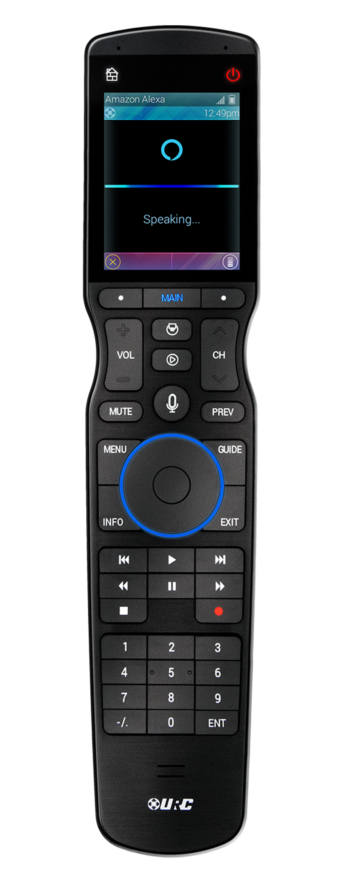
It’s a real pet peeve of mine when a remote’s display is too dim to read in a darkened environment (sadly, a problem that’s only getting worse as I get older), and the TRC-1480 totally aces this test, with a nice tilt sensor that wakes the screen and backlit buttons when you grab it.
Of course, the remote’s big trick is its built-in microphone with Amazon Alexa integration. With this you can easily do about anything that you can with a normal Alexa device, including setting timers and playing music from the remote’s built-in speaker. This push-to-talk microphone only listens when voice control is engaged on the remote and when the button is pressed, which should be some comfort for those with privacy concerns. Also, because you are talking directly into the mic, it does a good job of hearing your request if loud music is playing. I’ve gotten in the habit of turning lights and fans on/off via Alexa, and the voice remote did a great job handling these requests.
URC plans on adding Siri integration for the Apple TV to the remote, however, the pandemic has held up certification from Apple, so that feature isn’t currently enabled. (URC actually showed this in action at CEDIA 2019 when the remote was launched.) However, I would expect it to operate much as it did with Savant’s Pro Remote X2 (review available at residentialsystems.com), and this will add another powerful feature for Apple TV owners as it provides a fantastic way to search and quickly access content.
Another cool URC touch is the way the company integrates favorite and programming information. First, a homeowner can easily add and edit a list of favorite channels. After selecting their location and provider, the remote will then display a small bit of live guide information, letting you preview what is playing on a favorite channel before actually turning to it. This wasn’t life-changing, but it was a very welcome bit of added cool that took zero programming or effort on my part to implement.
While the 1480 has a Home icon in the upper corner for selecting and controlling different rooms in the project, I found myself primarily using it in my family/media room, and turning to the URC Mobile 2.5 app and the TDC-9100 touchscreen for much of the whole-house control as it was just easier to jump to different rooms and select things like lights, shades, and music on the larger screen. (Which is also how I’m used to using my Control4 system.) These interfaces also made it easier to link rooms for listening to the same music source around the house.
Beyond providing more real estate for displaying information such as a three-day weather forecast and a scrolling list of info in the lower corner such as the current weather and sunrise and sunset times, the touchscreen (and Mobile app) also provides a quick glimpse into what each room is doing, such as if the room is on, what is playing, and if it is linked to another room.
More Reviews: Savant Smart Series WiSA Surround System
The 9100 was especially great for using the third-party Kaleidescape driver I installed from Chowmain (chowmainsoft.com). With this driver I could browse my movie collection by cover art or list, search for a specific film, see synopsis of the movies along with rating, run time, and actors, or select and jump to Kaleidescape’s pre-bookmarked scenes, which was great for finding and queueing content before selecting it. While URC has a free, basic control driver for Kaleidescape, the Chowmain driver delivered a far richer experience, and was definitely a cooler way to browse my movies on the touchscreen. It also gave me the opportunity to work with Chowmain’s tech support and developers, specifically Richard Mullins, who was absolutely fantastic working with my feedback on the driver and developing multiple versions for me to test.
Compared to my usual Triad house-wide amplifier, the HDA-8100 had far more noticeable fan noise. We eventually got used to it, but it is something to be aware of if it is going to be installed in a lived-in area of the home.
While it is possible for the end-user to remotely access and control their home with the mobile app, be advised it does require setting a static IP or dynamic DNS server for the home, and then setting up port forwarding in the router.
During my time living with the Total Control System (about three months), performance and operation was pretty reliable. I did experience a couple of times where I had to reboot the HDA-8100 amplifier, needed to delete and reinstall the mobile app to get it to connect, or where the voice remote said, “Not connected to the AI Voice Daemon” when trying to use Alexa. URC suggested some of these issues might have been due to my home’s Luxul Epic Mesh network, which they recommend against using (and don’t officially support), but that was the network environment I had to work with.
With Total Control, URC demonstrates its ability to offer far more than just the one-room solution of its CCP line; it brings full control and automation, and the ability to integrate with a variety of popular sub-systems like Lutron lighting and Sonos audio. Most importantly, the system retains URC’s ability to customize button layouts and programming, adding greater flexibility for the end-user, and making the system especially adept at handling things like multiple screen control, with the Accelerator software helping alleviate some of the programming. (Or you can go with Flex if you want total programming control.) If you are looking to bring in a new control system or make a change from your current provider, Total Control’s feature set certainly makes it worthy of your consideration.
https://www.urc-automation.com; 800-901-0800
Kudos: Offers all of the programming flexibility URC is known for; Voice Remote is a great touch; lots of integration solutions
Concerns: Like any control system, performance tied to the programming
Product Specs:
- Total Control systems only available to authorized dealers and requires Accelerator programming software
- MRX-15 Advanced Network System Controller: Designed for large residential projects; stores and issues commands for all IP, IR, RS-232, Relays, Sensors, and 12-volt trigger controlled devices; requires hardwired network connection
- HDA-8100 multi-zone amplifier: Powers up to 8 stereo, 16 mono, or any combination with 100-watts/channel (8 ohms) ICEpower; inputs for 8 analog and 2 coaxial digital sources; requires hardwired network connection
- TRC-1480 Wi-Fi (2.4 and 5 GHz) remote control: Two-way metadata feedback via 2.4-inch touchscreen display; Voice Assistant Ready with built-in microphone and Amazon Alexa
- TDC-9100 10-inch (1280×800) touchscreen tabletop controller: Supports audio/video intercom calls across supported devices as well as door station integration; Cortex-A9 QuadPlus 1GHz microprocessor; hardwired Gigabit PoE+ network connection to docking station; 2.4 and 5G Wi-Fi support for panel
- URC Mobile 2.5 control app for iOS and Android devices: Remote access requires static IP or dynamic DNS setup
Dimensions:
- MRX-15: 83 x 2.03 x 8.3 inches (WxHxD); Weight: 4.61 pounds
- HDA-8100: 25 x 3.5 x 12 inches (WxHxD); Weight: 12.625 pounds

